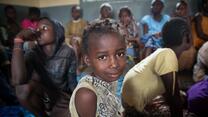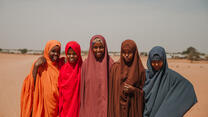As the number of people in humanitarian settings grows, there is a critical need for practical examples of how to effectively deliver contraception at every stage of crisis, from emergency preparedness, to acute emergency response and through recovery. Many places go from stability to crisis — and back again — with little warning. Others languish in low-grade state of conflict. These settings require attention to health systems combined with some emergency response capacity. The following case studies demonstrate the IRC’s success in providing uninterrupted access to contraception for women and girls living in these places in between. Whether in camps in Cox’s Bazaar, Bangladesh, displaced along the Lake Chad basin, in boats crossing the Mediterranean or on the road to asylum at the American border: women and girls want and need contraceptive choice.
Report
Explore related topics:
Related news & features
Our efficiency
- 87% Program services
- 8% Management and general
- 5% Fundraising
Join our mailing list
Get the latest news about the IRC's innovative programs, compelling stories about our clients and how you can make a difference. Subscribe
International Rescue Committee is a 501(c)(3) not-for-profit organization. EIN number 13-5660870.
Copyright © International Rescue Committee, 2024.



